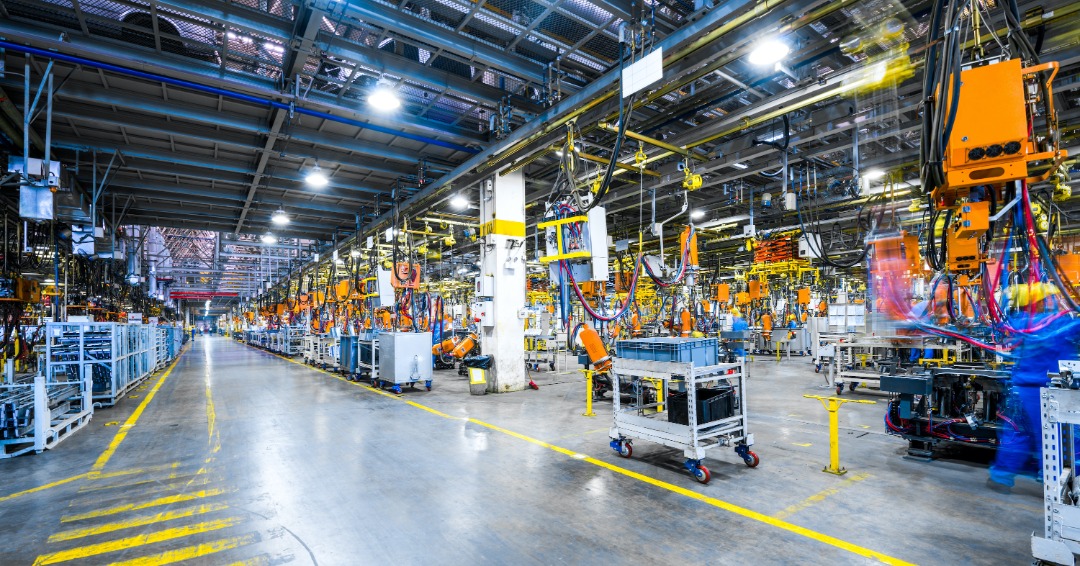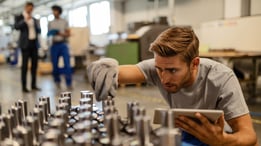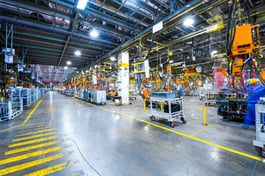
 Workforce efficiencies like automation are critical to maintaining operations and quality. Labor shortages in manufacturing are not new, but they are worsening. According to Liberty Mutual, 77% of manufacturers expect ongoing problems. The skilled worker shortage could exceed 2 million jobs by 2030, as multiple issues fuel the problem:
Workforce efficiencies like automation are critical to maintaining operations and quality. Labor shortages in manufacturing are not new, but they are worsening. According to Liberty Mutual, 77% of manufacturers expect ongoing problems. The skilled worker shortage could exceed 2 million jobs by 2030, as multiple issues fuel the problem:
- Retiring Baby Boomers
- Decreased interest from young workers
- Dramatically increasing wages
Labor problems will only increase as more jobs are returned from offshore to the US. No wonder 66% of manufacturers say they are struggling to maintain productivity. And 65% are worried about continued supply chain disruption. These concerns affect not only manufacturers but all consumable products.
How Automation Helps
Actuators, brakes, and gearboxes can assist in automating processes and can be used in nearly all types of equipment and machinery within industrial facilities. These include:
- conveyor systems
- assembly lines
- packaging systems
- tasks inside finished products such as medical devices or consumer goods
Robots have become essential components in assembly automation and many other manufacturing processes, performing highly detailed work proficiently and consistently. So-called “co-bots” now work side-by-side with humans to improve productivity and safety on the production floor. Robotics also work inside finished devices such as medical equipment, in effect serving as workforce co-bots for doctors.
Automation resolves more than workforce problems. It streamlines processes to save time, ensures reliably accurate and consistent performance well beyond what humans can do, and allows the equipment to perform tasks that humans simply cannot.
Automation increases:
- Product safety – in food processing, for example. Where contamination risks increase when people handle food, automation significantly reduces risk by assuring maximum sanitation
- Worker safety – eliminating hands-on “person contact” protects workers
- Productivity – processes can proceed faster with a higher degree of precision and accuracy
- Consistency to meet exacting standards or specifications
Automation can also lead to long-term cost savings. Although there are capital expenditures upfront, there is financial gain on the back end, especially over time as the company realizes return on its initial investment as well as production efficiencies. The ability to achieve multiple advantages reinforces the value of automating equipment.
Real-World Examples
In packaging automation, someone has to pack a box by hand, fold and seal it by hand, prepare and apply the shipping label, etc. Equipment can handle all those tasks using actuators and gearboxes to mimic human movements.
In addition, humans don’t always perform tasks the same every time, so that packed box that goes out the door may not look so nice. The product may arrive safely, but customers have increasingly higher expectations about their unboxing experience. Automation indirectly boosts marketing and brand reputation.
 Another common example of gearboxes in automation is beverage processing, where bottles travel along a conveyor system to be filled, capped, and sealed. Equipment heights or conveyor widths can be manipulated easily with the use of gearboxes and gearboxes can be used in the capping process.
Another common example of gearboxes in automation is beverage processing, where bottles travel along a conveyor system to be filled, capped, and sealed. Equipment heights or conveyor widths can be manipulated easily with the use of gearboxes and gearboxes can be used in the capping process.
In materials handling, conveyors in a warehouse use actuators (usually pneumatic actuators) to move products and perform tasks on them as they go. Cylinders, or brakes, can also provide vital tensioning to conveyors and other equipment that moves around a facility.
Automating processes can upgrade an existing facility or aid in designing new equipment or facilities that will be more proficient as well as efficient. In-house automation can also help alleviate costly problems caused by supply-chain disruptions. Introducing automation at the beginning of the supply chain provides progressive benefits all down the line.


